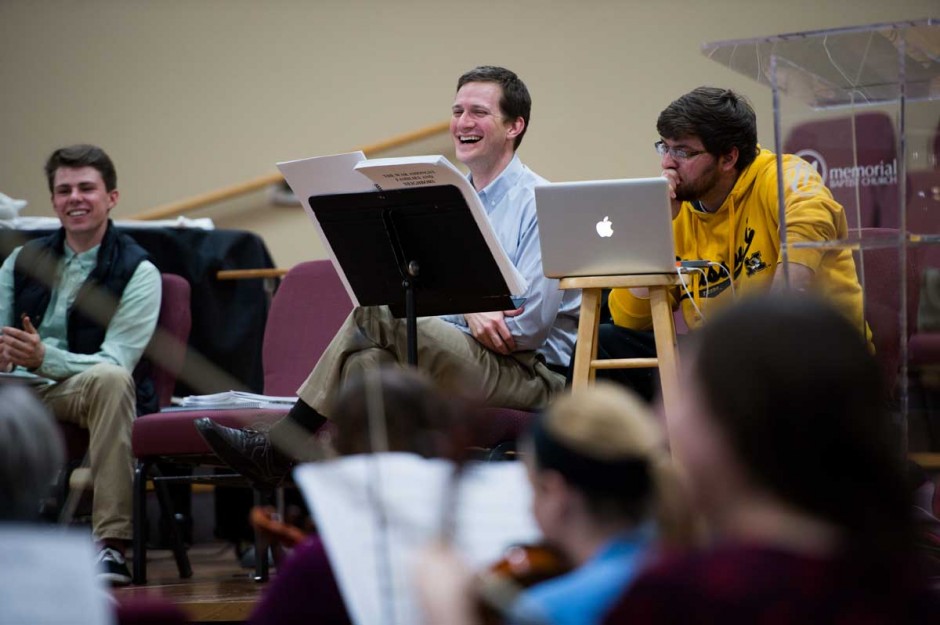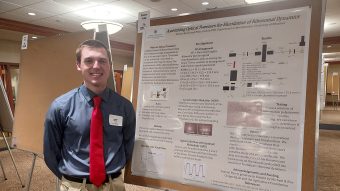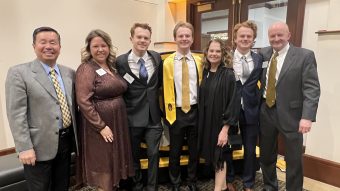CSA. USA. Confederate States of America. United States of America. The names of fallen soldiers from the Civil War are identified on the memorial on the grounds of the Boone County Courthouse. They stunned MU professor Stefan Freund when he moved to Columbia, and they spurred his interest in the state’s involvement in the war.
Nearly 10 years later, his oratorio exploring the brutal brother-on-brother bloodshed, “The War Amongst Families and Neighbors — The Civil War in Missouri,” premieres at 7 p.m. Thursday in Jesse Auditorium.
Origins
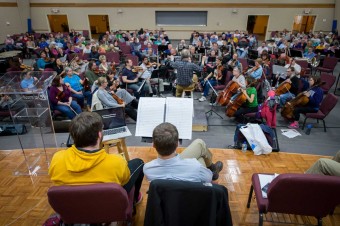
Freund doesn’t remember whether he first decided to write an oratorio or to write a piece about Missouri in the Civil War. But while watching MU’s Choral Union perform Shostakovich’s “The Execution of Stepan Razin,” Freund saw himself writing a piece for the ensemble.
The character Bloody Bill Anderson, who led the gruesome Centralia Massacre less than 25 miles from Columbia, was someone Freund felt could drive a dramatic musical work. Putting those ideas together, he began the preliminary work on his piece.
Initially conceiving the piece as a 30-45-minute oratorio for baritone, choir and orchestra, Freund spent all of 2012 writing grants. The proposed piece would be performed April 24, 2014, before the 150th anniversary of the Centralia Massacre. The concept for a full concert, part of an ongoing brainstorm with Director of Choral Activities Paul Crabb, never quite materialized, though.
After winning his grants and a sabbatical for fall 2013, Freund began collecting books. In August, he took a trip to Gettysburg, Penn., a month after the 150th anniversary of the battle, to further his research.
Missouri Foundation
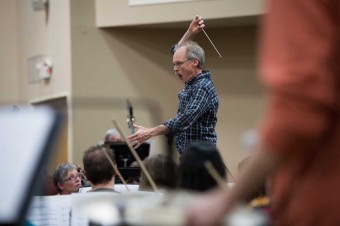
Freund returned to about 10 books, the first of which was The Civil War in Missouri, by UMSL professor Louis S. Gerteis. Freund expected the book, with its straightforward title, to give him a basic overview of what happened in the state.
Reading the forward, he became excited immediately. The exploration of viewpoints and the often-minimalized conventional military and political aspects, cast aside in favor of the more graphic guerrilla aspects, gave him a new foundation.
“I read it and went to see Paul, and I said, ‘Paul, I read this book and there’s so much fantastic stuff outside of the things we’ve been talking about with Bloody Bill Anderson,’” Freund says. “I told him I wanted to give an overview of the complete story of Missouri in the Civil War. I want to talk about how it was held in the Union, some of the significant conventional battles that determined the course of events out here as well as battles that helped determine the course of the war.”
The intricacies intrigued Freund and led to the rough draft of a two-part oratorio.
Close to Home
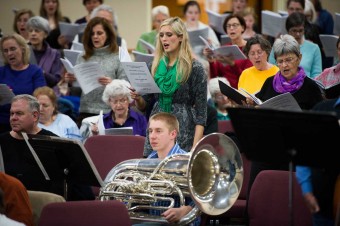
All of the text from Freund’s oratorio was compiled from existing works, including arrangements culled from folk tunes, newspaper editorials and letters from loved ones. Artwork from the period provided by the State Historical Society — including pieces by Missouri artists like George Caleb Bingham — will play on screen as the movements are performed, .
“The art — things like a portrait of Bloody Bill Anderson — was very striking to me,” Freund says. “If we see an image of these things, we believe it and internalize it a lot more. That’s why they photographed Bloody Bill dead. You can hear that he’s dead, but you see that photograph, and it makes it all the more real.
“The irony in this case is that some of the images are fake. The artist is in New York drawing images of battles in Boonville, Mo. It doesn’t look like what it really did, but it makes it all that more real.”
Freund can’t stress the importance of the connection enough: “This is music about Missouri performed by Missourians written by a composer who lives in Missouri.”
“I know every member of my orchestra intimately. I’ve seen the choirs perform many times,” Freund says. “These people are my friends. I have a really deep connections to them and relationships with them.”
Modern Understanding

Freund hopes the audience is able to take away a better understanding not only of the events of the war but also of the role the state of Missouri played in it — and what it was like to experience these events, such as the massacre of soldiers in Centralia or Quantrill’s burning of Lawrence.
When it comes time for the oratorio to be performed on Thursday night, Freund will be in Jesse Auditorium taking in the show with the rest of the audience.
“People have asked me why I’m not conducting, but it’s just too intense. I get so wound up,” Freund says. “After all the work that I’ve done on this piece, I want to get back and look at it from the third-person perspective. I’m hoping to be able to sit back and enjoy it.”
Concert Details
“The War Amongst Families and Neighbors — The Civil War in Missouri” shows at 7 p.m. April 24 in Jesse Auditorium. MU’s Choral Union and University Singers join forces with the Columbia Civic Orchestra for the performance. Tickets ($15, $10 for students) are available online or at the Jesse box office outside the auditorium.
